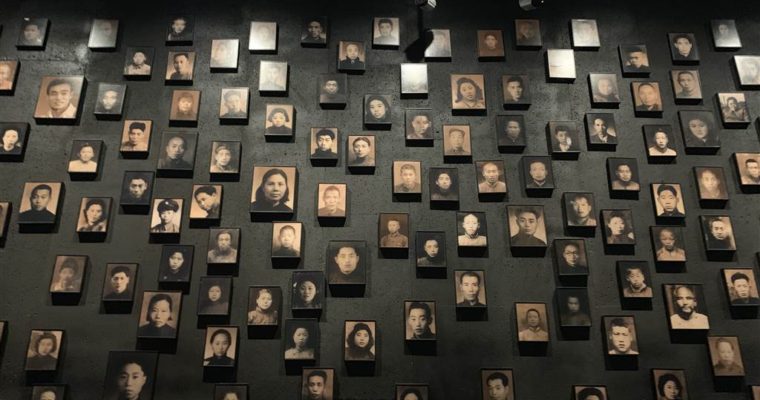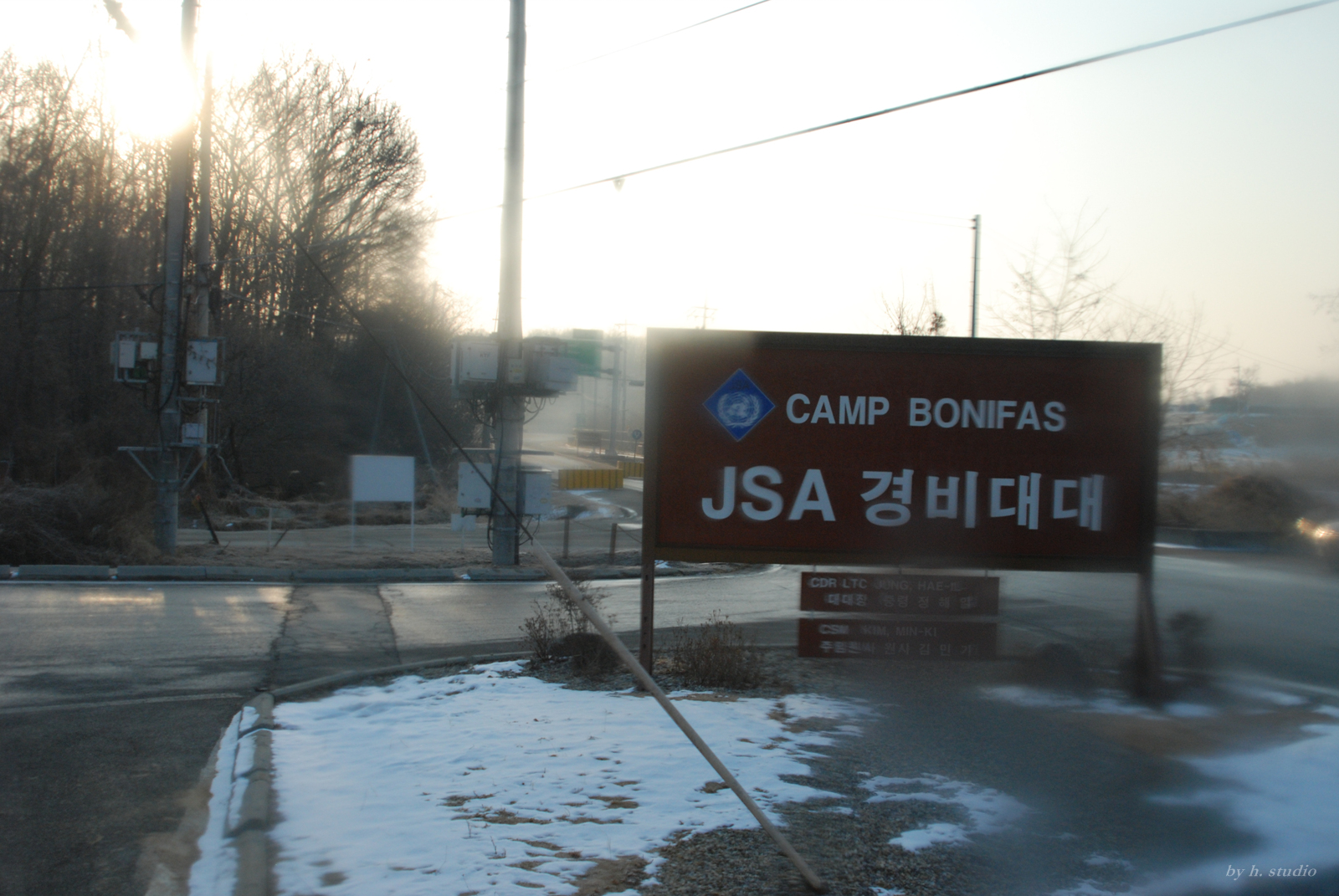“There ain’t no D in the DMZ.”[1]
It was a privilege for those from the West to be able to see the DMZ and Panmunjom via a U.S. tour organized by the USO. If I kept my Hong Kong identity, I could not have gone. The South Koreans also could not go freely. They would have to apply for a special permit, which could take up to half a year, to see the area.
The tour guide was an English speaking Korean and he talked a bit about the rules on our way to the DMZ. Of the most importance was no provocation when we were at the border. Secondly, we were to hold the strictest observance on orders where there shall be no pictures taken.
When he came around to take my order for lunch, I said bibimbab and he asked if I were Korean American. I was flattered.
The bus ride from the USO to Panmunjom took more than an hour. Once we arrived, we changed bus and were led to the Bollinger Hall, “In Front of Them All.” The spirit of confrontation was evident, and one would not miss the tensions already felt at the sight of military presence. At Bollinger Hall, we first signed a liability release. I was so nervous that my hand shook as I scribbled my signature.
We had a 20-minute presentation, military styled. I was not quite used to the military representative Officer Pearson’s accent, and also the presenter spoke in words like a rapid-fire machine gun. There were more details in the presentation than I could jot down. It covered the detailed history behind WWII and the subsequent division of Korea into two along the 38th Parallel.
The division could be deemed a historical accident. The 38th Parallel was originally there to denote the Japanese occupation of the peninsula in the south. At the time of division there were more Koreans living in the north than in the south. After WWII, the United States established a government in South Korea, which was freed from Japanese colonialization, by holding elections. North Korea was becoming red, meanwhile, the Soviets refused to hold elections and instead set up a government headed by Kim Il Sang.
Kim Il Sang came to power in 1946. He was succeeded by Kim Jong Il, his son, after his death in 1994. Now that Kim Jong Il has died in 2010 and was succeeded by Kim Jong Un, that would be the only succession of power by direct lineage in all of the communist world’s history.[2]
With two governments in Korea it became inevitable that there would be two Koreas, the North and the South. The 38th Parallel then became the border.
When the Korean War broke out in 1950, the peninsula became the battleground between the two Koreas, and the grand theater of conflict between their respective sponsors, the communist world (mainly China) and the West (the United States). When the North Koreans invaded the South, they managed to take territory all the way south, save for Busan, with the aid of the Chinese Army (they were called the China Aid Volunteers.) Then General MacArthur led the American troops and landed first in Incheon (thus the MacArthur Landing). They managed to recapture the territory all the way up to the 38th Parallel. There was a standstill at the 38th Parallel and the war dragged on. The war caused enormous casualties on both sides, with millions of lives lost.
The conflict only ended when an armistice was agreed by all relevant parties. Pursuant to the armistice signed in 1953, the United Nations set up a demilitarized zone (DMZ) along the 38th Parallel, where it was intended that there would be no military actions. Yet, as quoted at the beginning of this entry, the DMZ is an area of tension that is hardly demilitarized. I would soon be told the stories of confrontation in this strip of the border.
Still today, the DMZ is the epitome of an uneasy peace, peace it was that never fully materialized in this part of the world.
[1] Paul French, North Korea, State of Paranoia, at 5, the phrase is a GI saying.
[2] This was a claim made during the history presentation at the DMZ. But see Paul French, id. at 96-97.
.
This is part of a series on the Demilitarized Zone at the 38th Parallel separating North and South Koreas. Please visit the other entries in this series below:
South Korea – The DMZ and the Bridge of No Return.
South Korea – The DMZ, the Panmunjom and the Conference Room.
South Korea – The DMZ and the Infiltration Tunnels.




